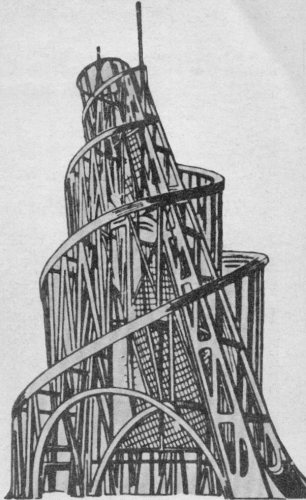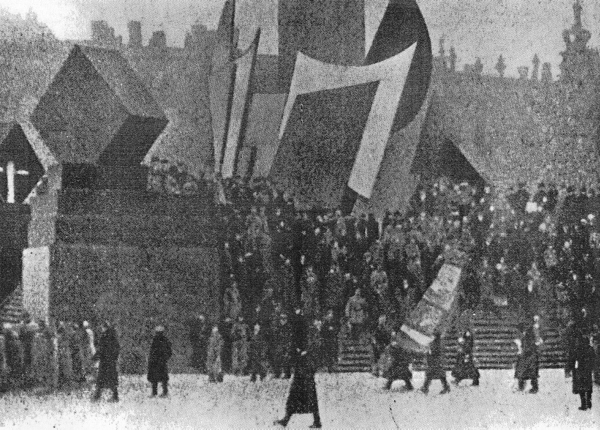
ISJ Index | Main Newspaper Index
Encyclopedia of Trotskyism | Marxists’ Internet Archive
From International Socialism, No.47, April/May 1971, pp.15-18.
Transcribed & marked up by Einde O’Callaghan for ETOL.
October 1917 was not just a political revolution. It also involved a cultural revolution – a complete transformation of people’s understanding, self-expression and communication. When Lenin declared that socialism meant ‘soviet power plus electrification’, electrification was, in part, a metaphor for enlightenment. The poet Mayakovsky, both a political (a Bolshevik from the age of twelve) and an artistic revolutionary could sum up the program of the artistic group LEF (left front) as: Electrification/Lettrification/Lenin.
The pictures [1*] on these pages are chosen to illustrate two of the main currents beneath this cultural revolution: Firstly, it aimed to break down – among other things – the frontiers between writing and painting, ‘fine’ and applied arts, education and propaganda, architecture and engineering, so as to expand art into a technique for transforming people’s understanding of their own possibilities. Secondly, it aimed to bring out the connections between this art and life.
 |
Tatlin’s model for a monument to the Third International (above) can be seen as the poetic symbol of both these currents. And so it was at the time (below); scaled down it appeared as a float in a demonstration in Leningrad seven years later.
 |
Art was brought into the street. The Revolution was commemorated in 1920 by a mass re-enactment of the drama of 1917 under the direction of N. Evreinov (below) and with the participation of many who had taken part in making the reality three years before. In the revolutionary theatre which developed from this, the life of the streets was brought into art.
 |
Demonstrations, street festivals, posters, theatre productions, the moving shadows on the cinema screen; all ephemeral perhaps. But the ideas spread, went on spreading and inspiring new generations of socialist designers working in the tradition – and working to make it now. The transformation of the ponderous Alexander Column (below) by N. Altman is both joyful and subversive – a combination we could still do with.
 |
1*. Of exhibits on display at a current (February-April) exhibition at the Hayward Gallery, London. A much fuller view of what was produced is in the catalogue (112pp), obtainable from the Arts Council, 105 Piccadilly, London W1, 45p.
 |
ISJ Index | Main Newspaper Index
Encyclopedia of Trotskyism | Marxists’ Internet Archive
Last updated on 10.2.2008